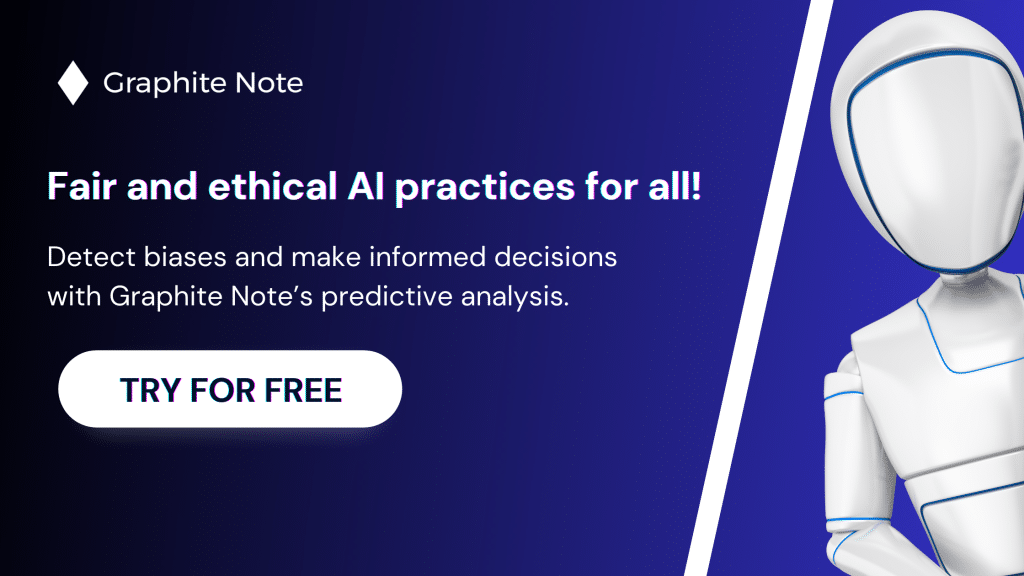A decision tree is a key data analysis concept to understand. We outline a definition and some key concepts associated with decision trees. We also describe the importance of decision trees. We help you to understand the different types of decision trees, and their role in data science.
What is Decision Tree?
A decision tree diagram is a graphical representation of decisions. A decision tree diagram includes the potential consequences of those decisions. A decision tree consists of nodes, branches, root nodes, and leaf nodes. Each node represents a decision made, or a test conducted on a specific attribute. Each branch represents the possible results or consequences of each decision. The root node is the starting point, which represents the first decision made. The leaf nodes represent the final results or conclusions.
What are decision trees used for?
Decision trees are used in data mining, machine learning, and artificial intelligence. A decision tree diagram has a tree like structure, hence its name. Decision trees are used in various fields. These include business, finance, healthcare, and machine learning. Decision trees can be useful for other tasks too. These include: financial planning, medical diagnosis, credit approval, and marketing strategies. With a decision tree diagram, you can:
- Break down a complex decision into manageable steps.
- Analyze potential consequences, risks, and rewards.
- Choose the course of action that best aligns with your goals.
What else are decision trees used for?
Decision trees are used in data analysis and decision making. Decision trees help you visually understand complex problems. A decision tree algorithm helps you make more informed choices. You can use decision trees toDecision trees are useful for predicting customer preferences and diagnosing diseases too. Decision trees are valuable tools for decision making.
What should I consider when building a decision tree?
When creating a decision tree, you need to consider:
- Attribute selection: Your attributes are the features that are used to make decisions. Your decision tree attributes should be relevant and informative.
- Attribute order: The order in which you add attributes affects your decision tree structure. It also affects your decision tree performance. Keep this in mind when designing your decision tree model.
- Splitting decision tree nodes: The way you split your decision nodes in your tree structure will affect your decision tree model. It also affects its potential outcomes, and conclusions. You need to select a measure of data impurity or information to select the best attribute to split on. You can use the gini impurity, entropy, or another metric to quantify the data impurity.
Decision trees in data analysis
Decision tree algorithms give you an easy to understand framework for decision making. Decision tree analysis helps you to see the decision-making process step-by-step. This makes it easier to comprehend and explain the reasoning behind decision making.
Decision trees and flexibility
Decision tree software can handle categorical and numerical variables. This makes decision trees, whether a simple decision tree or a complex decision tree, versatile and adaptable to different types of data. This flexibility is important for real-world scenarios where you may have to work with different types of data formats and structures. Decision trees can also handle discrete variables and continuous variables. This flexibility, for a simple decision tree, and a complex decision tree, enables you to conduct a comprehensive data analysis of diverse data sets. It doesn’t matter what type of data set you have to use, decision tree analysis makes it easy.
Decision trees can handle missing data values and outliers
You often need to pre-process information when using traditional statistical methods. A simple decision tree and a complex decision tree can handle these issues. Decision trees use the available data, saving resources in the data cleaning process
Decision trees and tasks
Decision trees can handle classification tasks and regression tasks. You can use decision trees to classify data or predict numerical values. A decision tree model can be used as a predictive model. This makes decision trees a powerful data analysis tool. A decision tree algorithm enables you to illustrate the effects of decision making in a clear, comprehensive way.
Decision tree nodes
Each decision tree node represents a decision or a test on a specific attribute.
Decision tree branches
Decision tree branches represent the possible outcomes. Nodes and branches expand as the decision tree grows. This creates a branching structure that represents the decision making process.
Root nodes
The root node is the starting point of a decision tree. A root node represents the initial decision to be made or the attribute to be tested first. Root nodes set the foundation for the entire decision-making process. As the decision tree grows, each node becomes a potential root node for its subsequent branches, forming a hierarchy of decisions.
Leaf nodes
Leaf nodes are the endpoints of a decision tree. They represent the final outcomes or conclusions. In classification tasks, a leaf node may represent the predicted classes or categories. In regression tasks, they represent the predicted numerical values. A leaf node gives you the final predictions or decisions based on the given attributes. Decision trees can have multiple leaf nodes, each corresponding to a different outcome. These outcomes can be based on various factors, such as customer behavior, market trends, or historical data.
Random forest
A random forest combines multiple decision trees into an “ensemble.” Each tree is trained on a different subset of the data, and sometimes with a random selection of features to consider at each split. The final prediction is made by averaging the results (regression) or taking a majority vote (classification) from all the trees. This helps reduce overfitting and often leads to more accurate predictions.
Terminal nodes
A terminal node is also referred to as a leaf node. A terminal node represents the end point. It’s the final destination you reach after following a series of questions or splits based on the data’s features.
Chance nodes
A chance node is represented by a circle. Chance nodes depict an event with multiple possible outcomes that are not under the decision maker’s control. These outcomes occur with a certain probability.
Internal nodes
An internal node is also called a decision node or non-terminal node. Internal nodesa are key elements within a decision tree that drives the decision-making process.
Decision tree classifiers
A decision tree classifier is a specific type of algorithm used in machine learning for classification tasks. Decision tree classifiers work by creating a tree-like model that asks a series of questions about the data to arrive at a classification.
Types of decision trees
Simple decision tree
A simple decision tree is a basic version of a decision tree with a shallow structure. It has a limited number of nodes and focuses on the most important factors that influence a decision. A simple decision tree has limited depth and focuses on key factors. This makes a simple decision tree easy to understand and visualize. Simple decision trees are faster to train and implement. Simple decision trees may not capture all the complexities of a situation. Simple decision trees are a good starting point for exploring decision making. They may have lower accuracy and less nuance than complex decision trees. Simple decision trees may not capture all the complexities of a situation. Simple decision trees are useful when you need clear, quick clarity.
Complex decision tree
A complex decision tree explores the intricacies of a decision. A complex decision tree has a more elaborate structure. A complex decision tree is multi-layered. A complex decision tree incorporates many factors. A complex decision tree can capture the subtleties of complex decision making. Complex decision trees have higher accuracy.
Classification tree
Classification trees are used for classifying data into different categories or classes. A classification tree is used for customer segmentation, sentiment analysis, and fraud detection. Classification trees classify data based on a set of rules. These rules are derived from the input variables. Classification trees enable you to predict the class of new, unseen data.
Regression Tree
A regression tree is used for predicting numerical values. These include: stock price prediction, demand forecasting, and real estate price estimation. Regression trees divide the input space into regions or segments. Regression trees divide inputs according to decision rules. Regression trees assign a numerical value to each segment. Numerical values are based on the average or weighted average of the target variable within that segment.
Continuous variable decision tree
A continuous variable decision tree is also known as a regression tree. A continuous variable decision tree tackles situations where features can have any value within a range.
Categorical variable decision tree
A categorical variable decision tree can handle data where features come in distinct categories. A categorical variable decision tree asks questions that sorts data points into specific categories at each branch. Categorical variable decision trees analyze and make predictions on datasets where features aren’t numerical.
How Decision Trees Work
Splitting criteria
Splitting criteria is a crucial aspect of decision tree construction. Splitting criteria determines how the decision tree divides the data. This is based on the available attributes or features. The most commonly used splitting criteria include Gini Index, Information Gain, and Chi-Square. These criteria assess the purity of the resulting subsets after the split.
Pruning techniques
Pruning prevents decision trees from becoming overly complex and overfitting the training data. Overfitting occurs when the decision tree learns the training data too well. This results in poor generalization. Pruning techniques remove irrelevant nodes and branches. This enables the decision tree algorithm to focus on the most informative features. This improves its performance.
Advantages and disadvantages of decision trees
Advantages of using decision trees
Decision trees are popular in data analysis and decision making. Decision trees are easy to interpret and explain.
Decision tree software can handle categorical and numerical data. Decision tree algorithms can accommodate missing values, and handle outliers without extensive pre-processing. Decision tree algorithms are capable of handling classification and regression tasks. Decision trees are versatile tools in data analysis.
Disadvantages of using decision trees
Decision trees do have some limitations. Decision trees can be prone to overfitting if not pruned or regularized. Overfitting can lead to poor generalization to unseen data. This reduces the decision tree model’s performance. Decision trees may struggle with complex and highly-dimensional datasets. They may need additional techniques such as ensemble methods to achieve higher accuracy. Decision trees may not perform well when the data contains overlapping or inseparable classes.





